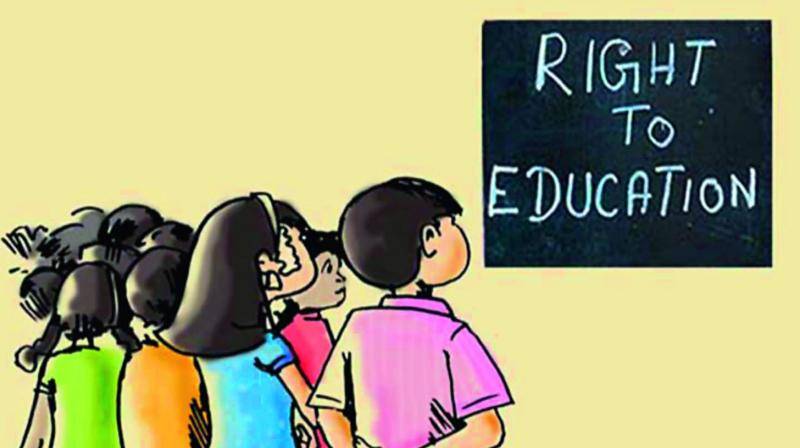Table of Contents
Right to Education: A fundamental and Human Right
Introduction
Education is the most important and valuable thing in someone’s life. Education is the best weapon to eradicate poverty. Education promotes knowledge and understanding in rural communities. Education is only pathway to maintain success in life. It increases the ethical values of the person. Education is not only learning about books but also learning about life. It rapidly increases your skill and awareness
Constitutional Prospective
Preamble of Indian Constitution talks about securing justice (social, economic and political) to its citizens.
Article 21-A contains provisions about right to compulsory education for children between age of 6 to 14 years.
Article 41 directs the State to make effective provision for securing the right to work and education, within the limits of its economic capacity and development.
Article 45: the state shall endeavors to provide early childhood care and education for all children until they complete the age of six years.
Article 46 directs the state to promote the economical and educational interests of the people of weaker section
Article 51 A (k) imposes a fundamental duty on parents or guardian to provide opportunities for education to the children.
Judicial Interpretation
The judiciary indicated distinct fascination for giving free and compulsory education to all the children beneath the age of 14 years. The Supreme Court in the cases of Mohini Jain and Unni Krishnan enforced the right to Education. In Mohini Jain v. State of Karnataka, the Supreme Court has held that the right to education is a fundamental right under Article 21 of the constitution which can’t be denied to any person by charging higher expense known as the capitation fee. The right to education streams from right to life under Article 21 of the constitution and charging capitation fee for admission to educational establishments is illicit and amount to denial of person’s right to education and furthermore violative of Article 14 being arbitrary, unfair and unjust. In UnniKrishna v. State of Andhra Pradesh, the Apex court was approached to inspect the accuracy of the decision given by the court in Mohini Jain case. The five judge bench by 3-2 majority partly agreed somewhat with the decision in Mohini Jain Case and held that right to education is a fundamental right under Article 21 of the constitution as it straight forwardly flows from right to life. Be that as it may, as respects its content the court halfway overruled the Mohini Jain’s case, and held that the right to free education is accessible just to children until they complete the age of 14 years, yet after the duty of the state to provide education is dependent upon the constraints of its monetary limit and advancement.
In Bandhuwa Mukti Morcha v. Union of India and others, it has been held that it is the obligation of the state to provide basic education to children likewise working in various factories or production lines and the court coordinated the government to make such schemes guaranteeing education to all children either by the industry itself or in a joint effort with it.
Act Passed by legislature for the enforcement of right
Right to education act, 2009: Presently, as a fundamental right, the provision of free and compulsory education to children was added by the Constitution (Eighty Sixth Amendment) Act, 2002 and Article 21-A is inserted. The Right to Education Act is a milestone which provides for institutional instructions so that education as a fundamental right spreads to all children between the age group of 6-14 years. The object of the act is to provide the full time elementary education to children in a formal school, which satisfies various norms and standards. It contains provision for reservation of 25% of their seats starting from Class I and strict criteria for the qualification of teachers. It also talks about requirement of a teacher student ratio (1:30) at schools that should met within a given time frame. The school is required to have various minimum facilities like playground, adequate teachers and infrastructure etc. The Government shall evolve some mechanism to help the marginalized schools to comply with the provisions of the Act.
Moreover, the concept of neighborhood schools has been introduced which states that the state government and local authorities will establish primary schools within walking distance of one kilometer of the neighborhood. Also it directs the unaided and private schools to ensure that the children from disadvantaged groups and weaker sections shall not be segregated from other children in the classrooms and also their classes should not be held at different places and timings.
While highlighting the main aspects of the Right to Education Act 2009, there are certain limitations like, children below the age group of six are not covered; Act failed to promote a common school system; lack of provisions for children with disabilities; criteria for reservations of seats; financial assistance; provision regarding reimbursement to the private school; lack of clear cut provision for competent authority; assuring quality standards; action against government authorities in case of negligence in services etc.
Conclusion
Government has sanctioned and executed the Act morally justified soul towards giving quality elementary education to all. The majority of the explored schools can satisfy essential framework aside from a couple yet concerning educational program, evaluation, teachers training and other related issues they are lingering a long ways behind. The perception from the meeting and poll show a wide hole between what was expected and what has so far been finished. The observations show that so far there has been some advancement just regarding enlistment /basic infrastructure however towards ensuring quality education regarding understudy learning the state needs to go a long way.
Author: Mayank Malhotra,
Student, School of Law, Christ (deemed to be University) DELHI-NCR

